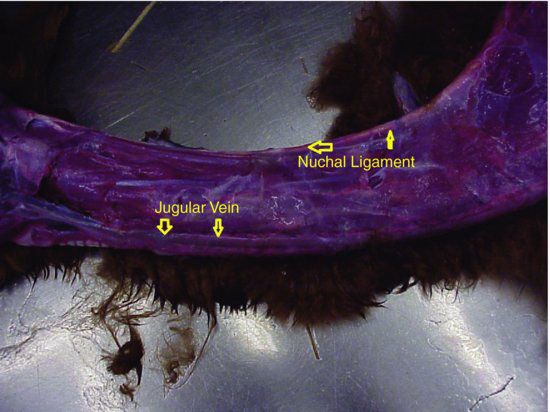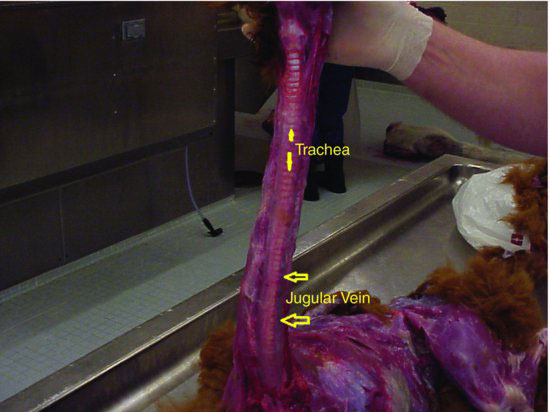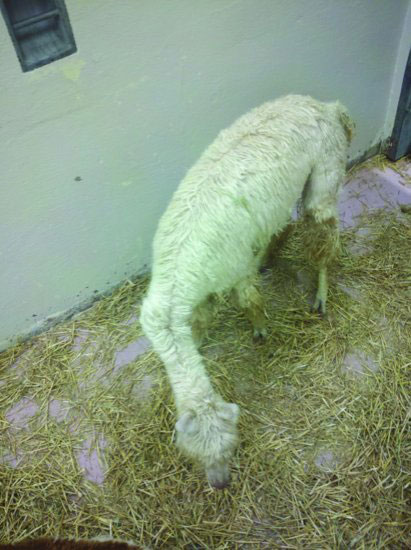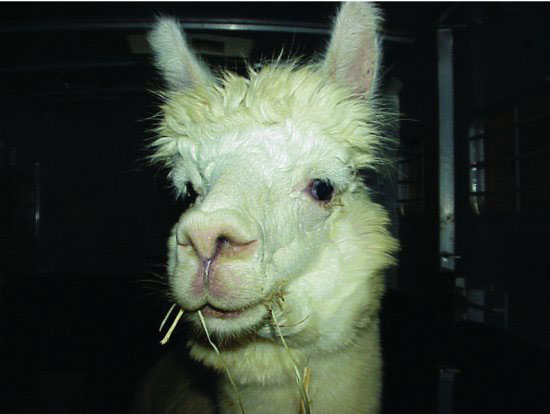The neck is long and has a wide range of motion in multiple orientations: dorsal-to-ventral, side-to-side, and rotationally. The vertebrae of the neck (C1 through C7) are prominent and form the majority of the bulk of the neck. Laterally and dorsally, muscle coverage in the neck is sparse, but camelids do have a well-developed nuchal ligament (Figure 23.2). Ventrally, the space between the transverse processes of the cervical vertebrae contains the trachea, esophagus, vagosympathetic trunk, jugular veins, and carotid artery. Camelids lack a jugular groove because of the absence of prominent musculature (Figure 23.3). Thus, venipuncture is more challenging and has a greater risk of complication, such as carotid artery puncture, as compared with horses and other livestock species. Cervical subluxation and fracture seems to be more common in camelids than other livestock and may be associated with the combination of range of motion without significant supportive muscle mass (Figure 23.4).
Figure 23.2 Relatively little muscle mass is present in the neck of llamas and alpacas, but a prominent nuchal ligament and jugular vein are present.

Figure 23.3 The ventral aspect of the neck includes the trachea on midline and the paired jugular veins, carotid arteries, vagosympathetic trunks, and the single esophagus (to the left side of the trachea).

Figure 23.4 Cervical injuries such as subluxation of the C4-5 and C5-6 vertebra seem to be more common among llamas and alpacas as compared with other livestock.

The head of camelids features large eyes having a wide field of view, split upper lips that posses some tactile and prehensile ability, and a soft, cartilaginous nose (Figure 23.5). Llamas and alpacas are semi-obligate nasal breathers and cannot mouth breath for prolonged periods of time. Camelids are the only domesticated ruminant to have upper incisor and canine teeth. The upper incisor and canine teeth and the lower canine teeth are referred to as the “fighting teeth” because males use these teeth for defense and when fighting for hierarchy within a group. Camelids have a limited range of motion in their temporomandibular joint and therefore cannot open the mouth widely. Although this poses no difficulty for the animal, oral examination by handlers is limited in view.
Stay updated, free articles. Join our Telegram channel

Full access? Get Clinical Tree



